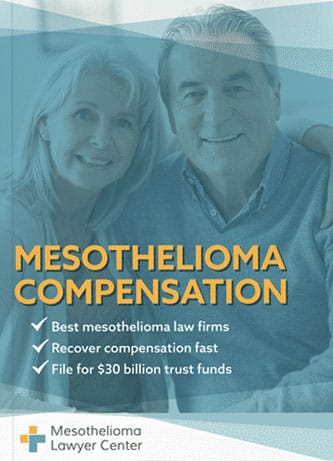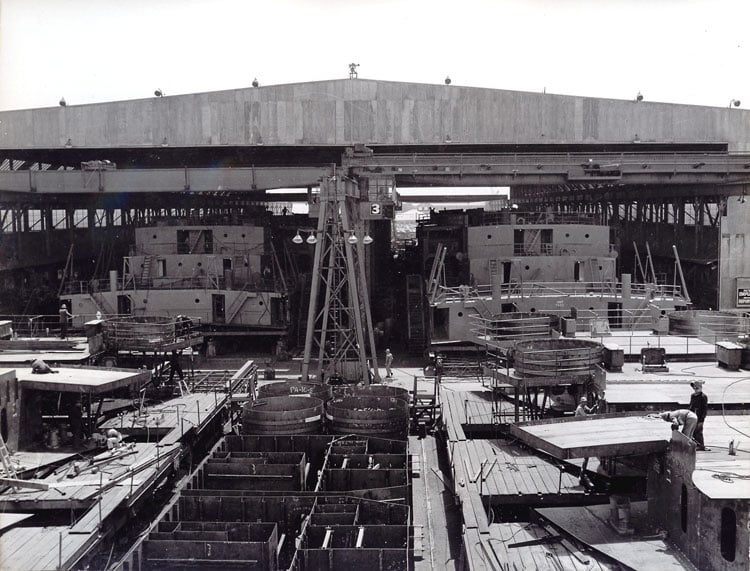Kaiser Astilleros consisted of a total of seven shipyards that were used to build and repair vessels. The shipyards played an important role during World War II. Amianto use at Kaiser Shipyards exposed thousands of workers and put them at risk for mesotelioma and other asbestos illnesses.
If you or a loved one suffer from mesothelioma, asbestos-related lung cancer, or asbestosis, you may qualify for substantial compensation. Currently, there is over $30 billion in asbestos trust funds, awaiting those who’ve been diagnosed with an asbestos illness. FComplete nuestro formulario para obtener un Paquete de Compensación Financiera gratuito. Aprenderá sobre los abogados con experiencia en mesotelioma en su área, cómo recibir su pago en 90 días, cómo presentar una reclamación a los fondos fiduciarios de asbesto y más.


Paquete de compensación financiera GRATUITO
- Información sobre despachos de abogados que recuperarán su INDEMNIZACIÓN MÁS ALTA
- Aprenda cómo cobrar en 90 días
- Solicite su parte de $30 mil millones en fondos fiduciarios

Did Kaiser Shipyards Use Asbestos?
All shipyards in the U.S. used asbestos for many years. The years of peak asbestos use in shipbuilding and repair were from the 1930s to the 1970s.
Kaiser is one of many shipyards that used asbestos. Amianto went into insulation and other materials on ships to protect against heat and fire. The use of asbestos only ceased when its dangers became more well-known, and the government began regulating it.
Kaiser Shipyards History
The Kaiser Shipyards consisted of seven shipyards along the West Coast in California, Washington, and Oregon:
- Four Richmond Shipyards in Richmond, California
- Oregon Shipbuilding Corporation in Portland, Oregon
- Swan Island Shipyard in Portland, Oregon
- Vancouver Shipyard, in Vancouver, Washington
Kaiser Shipyards in World War II
Henry J. Kaiser founded Kaiser Shipyards in 1941 in response to the U.S. Maritime Commission’s call for shipbuilding for World War II. An industrialist, Kaiser already had experience in shipbuilding for the Maritime Commission and for Great Britain.
Beginning with the Richmond Shipyards, Kaiser would go on to open seven shipyards and build nearly 800 ships during wartime production.
Kaiser Shipbuilding was short-lived, serving a wartime need only. In 1945, the four California shipyards closed down, followed by the closure of one of the Portland and Vancouver sites.
The only remaining shipyard, the Swan Island Portland Shipyard, is now managed and operated by Cascade General.
Notable Facts About Kaiser Shipyards
During its short run, Kaiser Shipyards set records and led a movement to diversify the American workforce. With men going off to war, Kaiser recognized the need to include women and minorities in shipyards. He even fought unions to ensure Black workers could work toward skilled, unionized jobs.
Kaiser Shipyards set a record for building a ship in less than five days. This was the SS Robert E. Peary. It also built the SS Joseph N. Teal ten days. These were Liberty ships, cargo ships used during World War II.
How Did Kaiser Shipyards Use Asbestos?
Kaiser Shipyards relied on asbestos for its resistance to heat and fire, ease of use, and affordability. Throughout most of the war, Kaiser Shipyards used asbestos in various equipment, rooms, machinery, and more.
Ships built at Kaiser and at other shipyards during this period contained hundreds of asbestos components. Some of these include:
- Aislamiento
- Revestimiento de tuberías
- Wall panels
- Cemento
- Textiles
- Juntas
- válvulas
- Zapatillas
- Adhesivos
How Were Kaiser Shipyard Workers Affected By Asbestos?
Often, employees and contractors worked in poorly ventilated shops, increasing their risk of developing an asbestos-related disease.
Kaiser Shipyards also never required workers to wear protective gear while working around asbestos.
A pesar de documents confirm that la Marina de los EE. UU. knew full well of the peligros del amianto, they never enforced the use of respirators or any other form of safety protection against asbestos fibers.
Numerous workers performing different job functions at Kaiser Shipyards were exposed to asbestos daily, including:
- Aisladores
- Boilermakers
- Mecánica
- Pipfietters
- Steamfitters
- Repair workers
- electricistas
Asbestos Lawsuits Against Kaiser and the Kaiser Asbestos Trust Fund
As more and more workers developed asbestos-related illnesses numerous years after working at Kaiser Shipyards, demandas began to stack up.
Most lawsuits were against manufacturers that supplied asbestos-containing products to the shipyard. Per the U.S. Marina de guerra, more than 200 types of asbestos-containing products from many different companies were used at shipyards throughout the nation.
In 2006, the Kaiser Asbestos Personal Injury Trust was created after thousands of lawsuits against Kaiser started mounting.
This includes the shipyards and “any valid asbestos personal injury claims for which Kaiser has legal responsibility.”
Kaiser’s asbestos-containing products, which included materials also sent to the construction, aerospace, and automotive industries, include:
- Aislamiento
- Unitab bricks
- Fire bricks
- Ore
- Finishing mud cement, and
- Cemento
How to Seek Compensation for Asbestos at Kaiser Shipyards
If you were affected by Kaiser asbestos products, contact an bufete de abogados especializado en amianto to learn about your legal options for seeking compensation.
If you or a loved one has a diagnóstico de mesotelioma, you may be eligible to file a lawsuit against asbestos companies. Asentamientos can provide valuable compensation for victims or their families who lost loved ones to asbestos exposure.
The Kaiser asbestos trust is another option. When asbestos companies go bankrupt, they can no longer be sued but should have trust funds available. A mesothelioma lawyer can review your case and help you take action to seek compensation.
Additional Resources and Help for Asbestos Victims
Si ha sufrido lesiones por mesotelioma, cáncer de pulmón relacionado con el asbesto o asbestosis, tenga en cuenta que existe una buena posibilidad de que califique para recibir una compensación considerable. No olvides rellenar nuestro formulario para obtener nuestro regalo gratis. Paquete de compensación financiera, lleno de información sobre los abogados con experiencia en asbesto y mesotelioma en su área.

Pablo Danziger
Revisor y editorPaul Danziger creció en Houston, Texas, y se licenció en Derecho en la Facultad de Derecho de la Universidad Northwestern en Chicago. Durante más de 25 años, se ha dedicado a representar a víctimas de mesotelioma y a otras personas afectadas por la exposición al asbesto. Paul y su bufete han representado a miles de personas diagnosticadas con mesotelioma, asbestosis y cáncer de pulmón, obteniendo indemnizaciones significativas para los clientes lesionados. Cada cliente es fundamental para Paul y atenderá todas las llamadas de quienes deseen hablar con él. Paul y su bufete se encargan de casos de mesotelioma en todo Estados Unidos.
Conéctese con el abogado especializado en mesotelioma Paul Danziger
Referencias
- Fite, J. (n.d.). U.S. Shipyards: A HIstory of Massive Asbestos Exposure and Disease.
Recuperado de: http://www.whitelung.org/GAConference/WS_H_0~2.PDF - Hedley-Whyte, J. y Milamed, DR (septiembre de 2008). Amianto y construcción naval: consecuencias fatales. Ulster Med. J. 77(3), 191-200.
Recuperado de: https://www.ncbi.nlm.nih.gov/pmc/articles/PMC2604477/ - Kaiser Permanente. (2021, June 2). Path to Employment: Black Workers in Kaiser Shipyards.
Recuperado de: https://about.kaiserpermanente.org/who-we-are/our-history/path-to-employment-african-american-workers-in-kaiser-shipyards - Kaiser Asbestos Trust. (n.d.). Kaiser Asbestos Trust.
Recuperado de: http://www.kaiserasbestostrust.com/index.html - U.S. Environmental Protection Agency. (2023, August 8). Asbestos Laws and Regulations.
Recuperado de: https://www.epa.gov/asbestos/asbestos-laws-and-regulations
